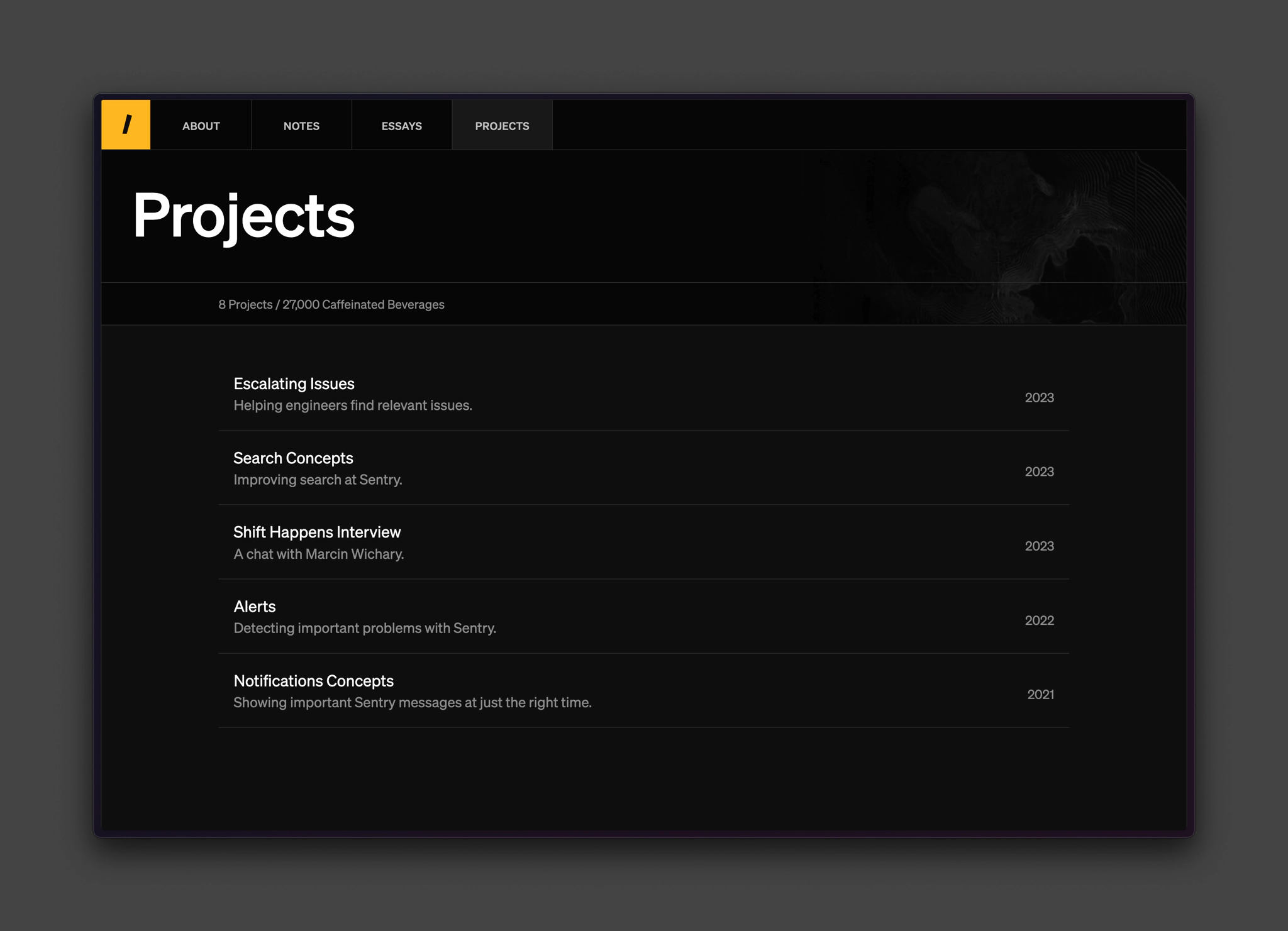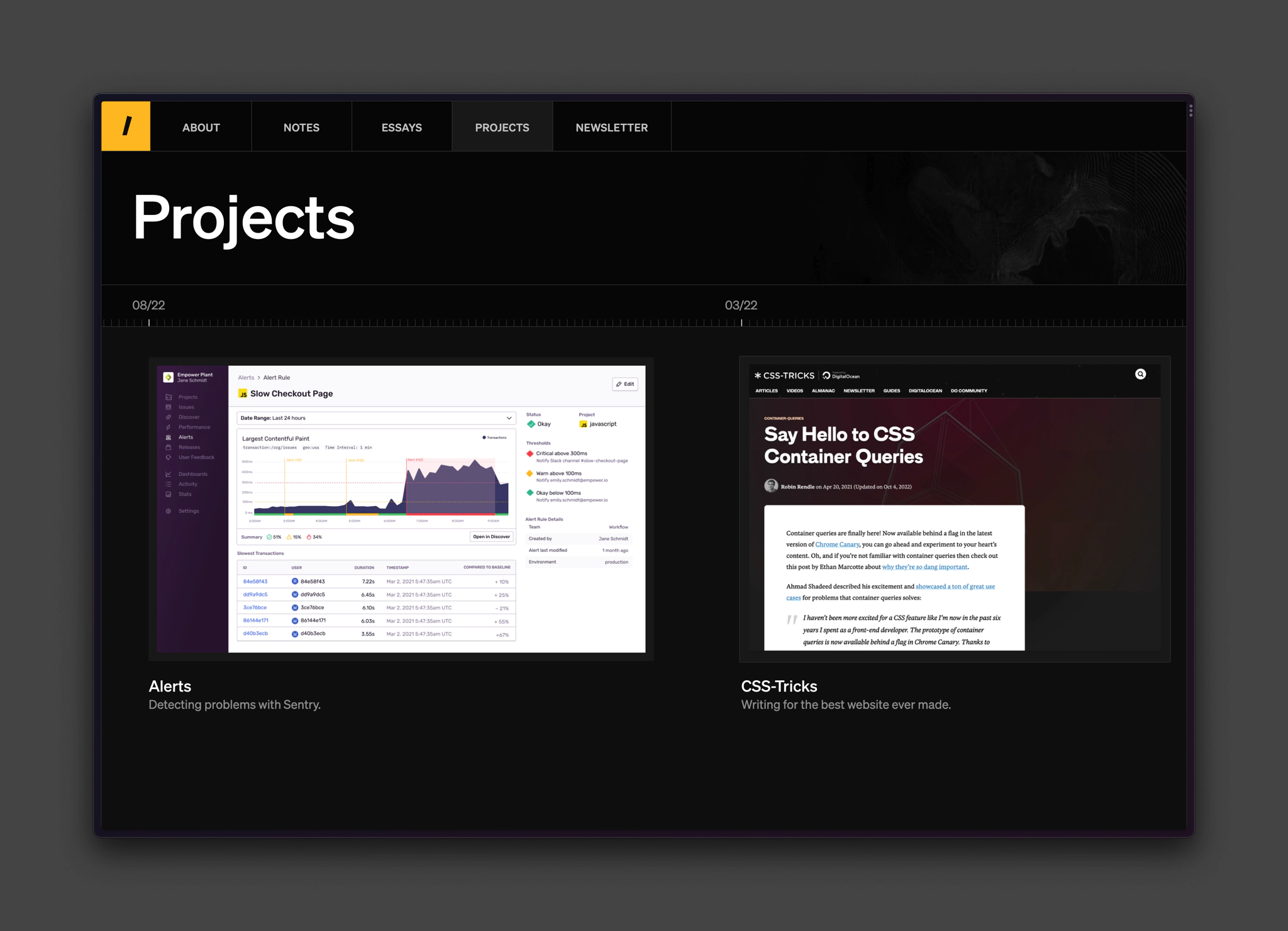Where the gaps are
I’ve been iterating on my portfolio for the last few days whilst desperately applying for a bunch of gigs and last night I finally got it into a good place. I’m not sure why it took so dang long but some problems are just stubborn and take forever to figure out.
Here’s the before and after:


It’s certainly not perfect but it’s certainly a lot better than a straightforward list. Be kind to the the HTML though! I had to do some completely bananas things in there that would make Jeremy wince so please do not go spelunking into the code. Later today I’ll get around to polishing all that horridness under the hood but for now I just needed a prototype to test things out in the browser.
And it feels pretty nice! I like being able to scan over my work and, instead of bragging about stuff, it’s handy to see where the gaps are. There’s all sorts of things I haven’t worked on yet, types of projects I’ve avoided, skills I haven’t yet developed—and this page now makes that clearer than ever.
This portfolio is also a good reminder of a few places where I’ve slipped up over the years. Career hiccups, if you will. You won’t? Rude.
Look, as a designer, you should always be building your portfolio. That sounds lame and boring but you need to make sure you record everything; copy all your docs from your design tool of choice and keep a private record of every SVG and napkin sketch. Ensure that you have all those high definition assets stored safe for later because you’ll eventually need them. Oh and keep things organized! Treat your portfolio as you would any client project (I’m especially bad at this).
Also, every project that disappears off the face of the earth or every project that isn’t good enough or doesn’t eventually ship can hurt you in the future. I’ve spent years working on projects that don’t ship and this looks bad on you in interviews. That’s incredibly stupid, yes, but it’s how design interviews work. If you think a team or a project is a dead-end then you need to jump ship as politely as possible. Not just for your mental health, but also for future gigs you want to apply to.
Because your portfolio is the door and the key. It opens and unlocks all the future possibilities in your career, and in this jerk’s opinion it’s the second most valuable asset we have besides a blog. Your portfolio can be plain spoken, or silly, or magnificent, gargantuan and hulking, with in-depth case studies and fantastic animations. That doesn’t really matter though. You just need to tend to your portfolio every once and while, it’ll pay off eventually.
Because yes, me, I’m looking squarely at you. You need to take care of your portfolio so that, at some point in the future, it can take care of you.